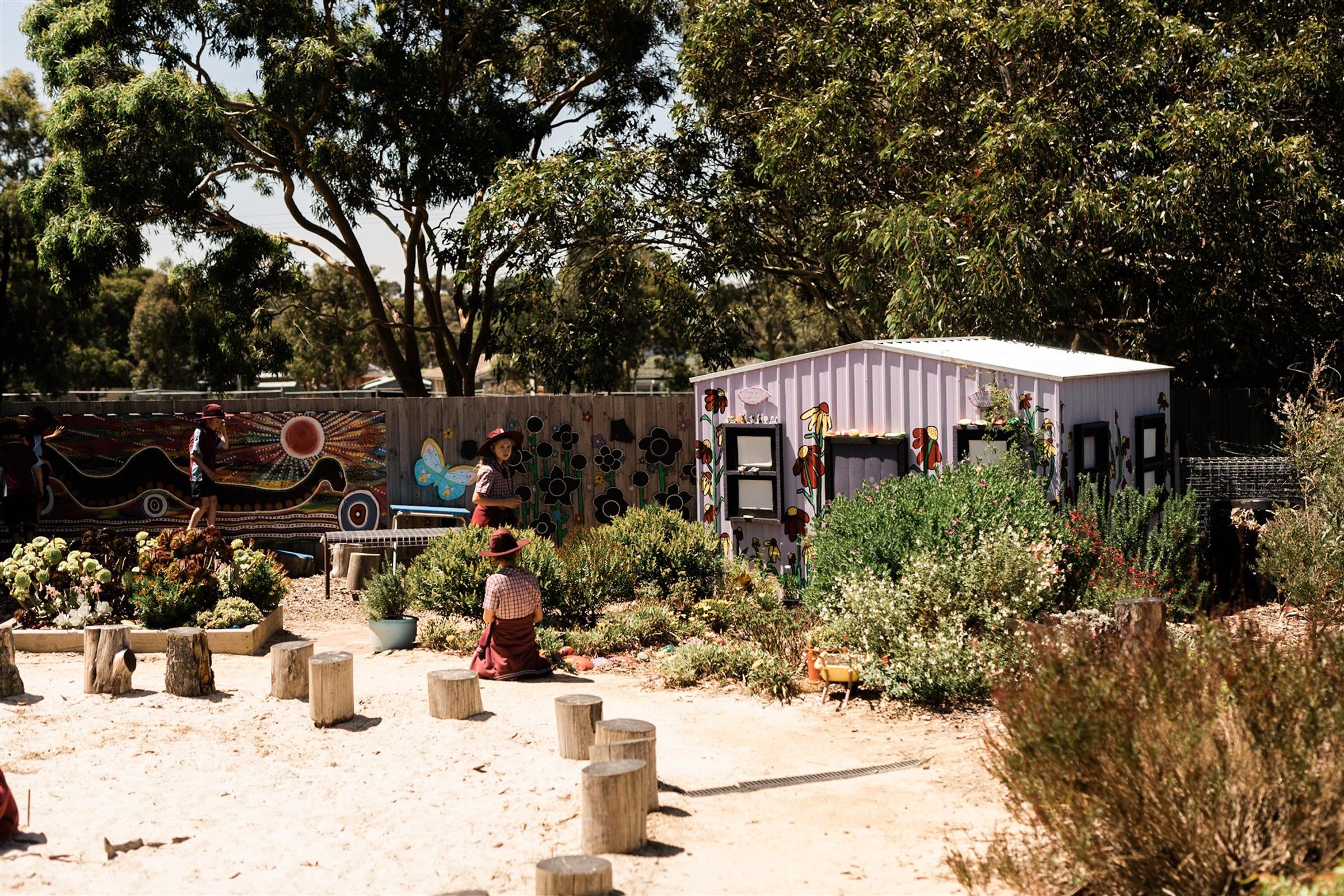Wellbeing

SOCIAL/ EMOTIONAL LEARNING
Last year at St Anne’s we introduced Social and Emotional lessons in groups made up of Prep - Yr 6 children. These were a great success and it provided many opportunities for learning in the Social and Emotional Learning space. After review and evaluation with staff and students, this year, the student will be grouped Prep - Yr 2 and Yr 3- Yr 6. They will also be grouped in their House groups ( Edmends, Crowley, Feenan, McKillop).
Yesterday was the first vertical learning SEL lesson. These lessons will usually take place fortnightly on Wednesday afternoons. However next week, there will be another session together.
By providing this opportunity for learning we aim to:
- build relationships with staff and students
- develop understanding of positive relationships and connections.
- extend emotional literacy via an enhanced vocabulary of understanding and describing emotions.
- learn about the importance of valuing difference in individuals and groups and how appreciating diversity contributes to positive relationships across the whole school.
- learn to work both independently and in teams.
SOLVING PROBLEMS THAT ARISE FROM SCHOOL
It is common for children to have some problems at school. St Anne’s Catholic Primary School is committed to receiving, managing, and responding to issues in a manner that achieves the best possible outcome for our students and fosters good relationships with parents/ guardians/ carers and the school community. Staff are encouraged to work collaboratively with students, parents/guardians community to resolve these matters informally with the wellbeing of the student at the centre of the matter. If resolution of the matter is not possible in this manner, then it may escalate to a complaint under the Complaint Handling Policy.
An article in Raisingchildren.com provides some tips to foster positive teacher and parents relationships.
Good parent-teacher relationships
A good relationship with your child’s teacher and school is a great starting point for handling any problems that come up at school.
You can lay the groundwork for a good parent-teacher relationship by introducing yourself and getting to know your child’s teacher as early as possible. Communicating and building relationships with your child’s teacher helps you to work well together when there’s a problem.
Good parent-teacher relationships mean children:
- do better academically, emotionally and socially
- are happier at school
- attend school more regularly
- are better behaved.
School problems: what to do
It’s common for children to have some problems at school.
Some problems are minor – for example, missing out on school council or forgetting to bring the right sports uniform. You and your child can usually sort these ones out yourselves by talking and problem-solving together.
Some problems might be more complicated or long-lasting. For example, your child might be having ongoing difficulties in the playground with another child and the strategies you’ve suggested to your child haven’t worked. With these problems, you might need to talk with your child’s teacher to find solutions.
How to approach school problems with teachers
When you need to talk with teachers about problems, a calm and positive approach is likely to get a positive outcome for your child. Here’s what to do.
Pause to calm down
If something has just happened to upset your child, this can upset you too. Try to take some time to calm down before you do anything. This will help you avoid doing something you might regret later, like sending an angry email.
You could say, ‘I see you’re very upset about this, and I’m upset too. We need to calm down so we can think about what to do’. Saying this will help your child to learn this strategy too.
Be a positive role model
Even with a serious problem, you can model positive problem-solving for your child by being positive, thinking about solutions, and talking about working with the teacher. This is better than complaining or being aggressive.
You could say something like, ‘Let’s ask Mr Smith if he has any ideas about how we can sort out this problem’. This kind of approach shows your child that you value the teacher’s opinion.
Speak respectfully
No matter what you think, it’s important to speak positively and respectfully about your child’s teacher, the school and other children in front of your child. If you complain or criticise the teacher or other children and their families, your child will do the same.
Go through the right channels
This usually means talking directly to your child’s teacher to start with, rather than the principal. Going straight to the principal can make the problem bigger than it is.
It’s best to make an appointment with the teacher. This way you can discuss the issue privately and the teacher can give you their full attention.
Depending on the issue and your child’s age, it might be appropriate for your child to come to this meeting.
Avoid defensiveness
When there are problems, people sometimes feel defensive. For example, if either you or the teacher feels criticised, you could both end up feeling defensive.
Defensiveness can get in the way of problem-solving, so it’s good to try seeing the teacher’s perspective and to help the teacher see your perspective too. For example, ‘I can see it’s unrealistic to expect you to spend lunch time in the playground helping Ethan, but I’m worried because he’s lonely and has nobody to play with. How can we both help him with this?’
Problem-solving steps to use when meeting with teachers
If you decide you need to meet with your child’s teacher about a serious problem, the following steps can help you and the teacher work together to get a positive outcome.
1. Identify the problem
Be clear and specific about what the problem is – for example, what’s happening, how often, who’s involved and who’s affected. It can help to use a question. For example, the problem of ‘How can we help Brenna make some friends to play with?’ is easier to solve than ‘None of the children will play with Brenna’.
It’s also helpful to ask your child’s teacher about the problem. This way you’ll hear about the situation from another person’s point of view. For example, ‘Brenna is saying no-one wants to play with her. Does this sound right from what you’ve seen?’
2. Identify wants, needs and concerns
Allow everyone to identify their needs, wants and concerns. If you want your child’s teacher to appreciate your concerns, it’ll help if you show that you appreciate the teacher’s position.
Use sentences like ‘I understand…’, ‘I’m concerned about …’, ‘I need …’ and ‘I want …’. For example, ‘I understand that it’s a big class, but I’m concerned that Alistair is falling behind because he doesn’t understand the maths’.
3. Come up with possible solutions
Work with the teacher to come up with as many possible solutions to the problem as you can. Your child’s teacher has a lot of experience dealing with problems. The teacher also has strategies that have worked in the past.
It’s very important not to judge ideas at this point. This increases the chances of finding the right solution to your problem.
4. Evaluate the solutions
Once you and the teacher have listed as many ideas as possible, think about the advantages, disadvantages and consequences of each solution. If a solution has more disadvantages or negative consequences than advantages, cross it off your list. Keep doing this until only the best solutions remain.
When you’re doing this, it’s important to be realistic. For example, it’s not reasonable to expect a teacher to sit with your child during difficult activities, but it’s reasonable to expect the teacher to check in with your child every so often.
5. Choose one and give it a go
Pick the best idea, or a combination of ideas, to try out. Write down what you and the teacher have agreed, who will do what and when. Decide when you’ll meet again to look at how the solution is working. Give the solution 1-2 weeks to work before you talk about it again.
NATIONAL CONSISTENT COLLECTION OF DATA - NCCD
As mandated by the MACS, we will begin our review of NCCD. It counts the number of students who receive additional adjustments or “help” at school because of a disability. The NCCD helps governments plan for the needs of students with disability.
Many students that need help at school can be counted in the NCCD. For example, students with learning problems, e.g. specific learning disability or reading difficulty (sometimes called dyslexia), health problems (e.g. epilepsy or diabetes), physical disability (e.g. cerebral palsy), vision/hearing loss and social-emotional problems (e.g. selective mutism, Autism Spectrum Disorder, anxiety).
More information is attached to this newsletter.Information Sheet
From the Wellbeing Team.
Kristie Browning Wellbeing Leader
kbrowning@sasunbury.catholic.edu.au
Lindy Brown MHiPS Leader
lbrown@sasunbury.catholic.edu.au
Jade Salpietro Prep -Yr 3 Learning Diversity Leader
jsalpietro@sasunbury.catholic.edu.au
Sue Sexton Yr 4- Yr 6 Learning Diversity Leader



